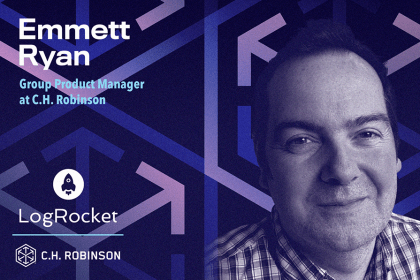Arun Lal is the VP of Product Marketing at Rippling. He joined Rippling in 2023, bringing more than 20 years of experience in product marketing, product management, and entrepreneurship. Arun previously held leadership roles at VMware and Microsoft, as well as several startups — one of which, Contiq, he co-founded and ran.

We recently spoke with Arun to learn more about product marketing initiatives at Rippling and his role within the company. Arun discussed his approach for creating messaging for complex products and shared insights on strategies for driving customer adoption.
Our conversation has been edited lightly for brevity.
Product management is very much about applying your creativity to building something. It’s very hands-on. If you’re a builder, I think it’s the perfect place to be. You can apply creativity to building a new product and innovating for your customers.
While I was at Microsoft working as a product manager, I began learning more about marketing and go-to-market through the company’s internal programs. It was a pivotal moment for me.
I wanted to understand how to take a product that’s innovative and very disruptive and collaborate with the various functions that work to generate revenue or business from it. That led to my transition to product marketing.
Rippling is a late-stage startup that builds HR, finance, and IT software, primarily for small and mid-market companies. What’s unique about Rippling is the common foundation on which it creates applications for businesses.
This foundation is based on the notion of the Employee Graph, which is a comprehensive organizational framework for employee data that is often trapped in multiple silos and in different apps.
For example, Zendesk, Okta, and Slack all have bits and pieces of employee information. Rippling connects to these applications and aggregates all employee data in a single system — this system is what we call the Employee Graph.
Once the Employee Graph is generated, it can be used to create common patterns for workflow automation, permissioning, policies, reporting, and analytics. For example, you could run a recruiting app or an IT app on top of it — the infrastructure is common.
This whole notion of building multiple different products that are deeply integrated to help solve larger business problems, across different business systems, is something we refer to as a compound startup.
We have a company goal that any new hire can be onboarded in 90 seconds, and we actually deliver on that. The process of getting a new employee fully set up with all documents signed and payroll, laptop, and apps provisioned is really easy.
When I came on board at Rippling, it was like jumping onto a rocket ship! What surprised me most was the pace of execution. I have not seen this level, pace, or precision of execution before. We launch one or two complex, category-creating products each quarter.
I’m currently working on the messaging and positioning framework for Rippling. This project has a very high level of complexity due to the large number of product lines, customer segments, and personas. As part of our marketing and sales cycle, we need to influence the heads of HR, IT, and finance.
Thinking through what the positioning and messaging structure should look like is challenging with this level of complexity. I like to create cross-cutting umbrella messaging that works across segments and across product lines.
Sometimes I feel like I’m a politician, and the personas are like subsegments of an electoral base that I have to please. With this analogy, I need a broad, umbrella message that will appeal to the greater electorate, but I also need to craft messages for the individual buyer personas, or segments, that I talk to.
All these messages need to be integrated and consistent. To be successful, the messaging needs to explain the value delivered to address customer needs or desired outcomes alongside competitive differentiation.
The first step is to figure out who your happiest customers are, and then get a deep understanding of why they are happy and what value they derive from your product. To do this, you’ll need to talk with your technical account managers or customer success managers. What you hear may surprise you.
When you uncover a valuable use case or feature, you can build a case study around it to explain the use case and the value that was derived. Case studies are a great vehicle for illustrating how companies are using a particular feature to generate value and create amazing outcomes.
We’ve found there’s often a segment of users who are not familiar with a particular feature, so this is a very powerful way for prospective customers — as well as existing customers to discover and realize value. We’ve seen case studies lead to massive uplift in both adoption and sales.
This is always a hot topic. I’ve found that across the goals or key initiatives that you’re trying to drive, it’s usually a good idea to establish both leading indicators and lagging indicators.
I have an example from a previous role at Productiv. We wanted to measure the impact of the messaging in our pitch decks and marketing collateral. To do this, we created a leading indicator that was an adoption metric based on the messaging that we actually trained the field on.
We used the inbuilt functionality available in Gong to create an adoption metric based on the use of certain keywords by salespeople and the use of certain slides. This became a very good leading indicator, showing us when the right message was being presented to the prospect at the right sales stage.
We also set up a lagging indicator to track when deals progressed to the next stage after the messaging was presented. Using these indicators, we could create a first-call deck or a second-call deck and more easily measure its impact.
With this approach, we were able to reduce the time from “early stage” to demo by 15 percent. We worked on this for almost two quarters, but it was worth the effort to be able to see that our work was leading to faster conversions.
You have to give things time to play out, but setting up a good leading indicator and lagging indicator for any OKR or initiative that you’re driving is very important.
There’s no silver bullet, but I often find the most value from setting up direct interviews with customers. For example, I recently hosted a roundtable in New York for 10 or so customers. I was able to ask how things were going, find out which features the group was using, and which features were not resonating.
In this type of session, participants tend to build off of each other’s comments, so I’m able to get a tremendous amount of high-quality feedback in a short time. Doing those interviews individually could take three or four weeks.
At least anecdotally, I can usually start to see patterns and themes emerge. Then, I marry those themes with what I’m seeing in the data. I always try to segment feedback by both persona and customer segment to contextualize it.
Roundtables are incredibly efficient, especially if you’re able to tack them onto a preexisting event. By doing two or three roundtables, you’ll get massive amounts of feedback. I think this is a real winning strategy.
And, best of all, customers absolutely love them! They feel honored to be invited and also very invested. This helps build a strong community of ardent fans who support your product — it’s very powerful.
I like the fast pace. I also like being able to have more impact and more control over the things I can do and the strategies I can implement.
Also, there are fewer stakeholders. I enjoy feeling like an owner in the business, and that’s the way I like to operate. I take personal pride and invest my personal capital toward making the product successful.
I feel like a lot of personal initiative gets highly diluted at bigger companies, and execution can become very, very slow. It can take months to see the impact of your work. At early-stage companies, a small group of people can get together, come up with creative ideas, implement them the next day, and start seeing results. That cycle of quick feedback is very energizing.
LogRocket identifies friction points in the user experience so you can make informed decisions about product and design changes that must happen to hit your goals.
With LogRocket, you can understand the scope of the issues affecting your product and prioritize the changes that need to be made. LogRocket simplifies workflows by allowing Engineering, Product, UX, and Design teams to work from the same data as you, eliminating any confusion about what needs to be done.
Get your teams on the same page — try LogRocket today.
Want to get sent new PM Leadership Spotlights when they come out?

Act fast or play it safe? Product managers face this daily. Here’s a smarter way to balance risk, speed, and responsibility.

Emmett Ryan shares how introducing agile processes at C.H. Robinson improved accuracy of project estimations and overall qualitative feedback.

Suvrat Joshi shares the importance of viewing trade-off decisions in product management more like a balance than a compromise.

Great product managers spot change early. Discover how to pivot your product strategy before it’s too late.